Mark Brayne got his hands on a rebuilt V17L, then gave it a modern refurb in the back end and bolted on the good gear. Now it’s the perfect lightweight, trailerable game-fishing machine.
Tell us more about this top-secret work you do.
I can’t actually say what I do for a job. Not in public, anyway. My boss says its policy. Let’s just say I’m a seafaring watch keeper and vessel operator.
So we’ll assume you’re skippering a nuclear sub.
Tell us about this sweet V17, Brayne-Washed — how did it come about?
I wanted something I could easily tow behind the HiLux, that I could take anywhere to find fish. We recently crossed the border into Victoria to chase swords. We also head north every year to Fraser Island chasing blue and black marlin, as well as reefies.
What about your home port of Ulladulla? That’s not too shabby on the fishing front.
It’s hard to beat the South Coast when the marlin are firing in summer. Game fishing has become my passion over the past five years. Anything that involves heading offshore and chasing big fish gets me excited.
What made you choose a Haines Hunter V17?
I was tossing up between the V17R and the V17L, but ended going with the V17L because of the extra freeboard and raised cabin. Spending time offshore, I thought it had more of an edge. The funny thing was, I only wanted a 17-footer as an interim boat while I built a house. Then I was planning on buying a 6m boat. Four years on, I’m finding it hard to fault and loving it more and more — it punches way above its weight.
What’s the history of the boat?
In 2013, it was rebuilt by a bloke called Ben Harper — not the singer — from its original condition. At that stage, it had an old Evinrude engine. The top deck was lifted off, then everything gutted except the side pockets. The stringers, transom and floor were replaced, and a forward bulkhead added under the dash. The floor was kept level for the entire length of the boat and a hatch fitted under the floor in the cabin. He did an exceptional job — far beyond my capabilities.
Tell us about the construction method.
The build was out of marine ply, fibreglassed over, then flow-coated. The transom was kept at 20 inches, but strengthened with large knees so it could easily hold a 200HP motor. It’s a two-pack paint job over the top of the old gelcoat. He also fitted a new 120L alloy fuel tank.
How did you get your hands on it?
In 2016, Ben sold it to the bloke I bought it from. That guy was moving inland, so he wouldn’t have as much use for the boat, but he still had a tear in his eye as we towed it away.
What changes have you made?
When I got her, she was set up for spearfishing with just a motor, wave-breaker and two rod holders. I fitted a bimini and clears, rocket launcher, bait board, rod holders, 1kW transducer, outriggers and a helm seat.
Who did the sweet set-up at the rear?
The transom section hadn’t been modified from its original bucket-seat configuration, so I ordered a drop-in fibreglass section from Higgins Custom Marine. I got it glassed in by Boothy’s Fibreglassing Services then added a Thermo-Lite live bait tank. The higher freeboard feels much safer and gives us a more useable fishing platform. Boothy did a great job — the finish looks like it came out of a factory mould.
How does it compare to other boats you’ve owned?
I’ve only owned alloy boats before, so riding in a Haines V17L is like going from an old LandCruiser to a new HiLux — a whole lot softer. I like driving hard and getting to spots quick, and this little weapon is good for that.
How is the donk?
It has a great power-to-weight ratio, making it perfect for the V17. They are great on fuel. Cruising at 4000-4500RPM, I’ll use around 20-25L an hour, which gives me a speed of 20-25 knots. I work on a litre per mile when planning longrange trips. With the throttle wide-open, she hits 34 knots with all the gear on board — which uses around 40L an hour.
What’s the all-up cost?
It’s blown out a bit. Including a brand-new Suzuki DF140, it owes me around $75,000. But it’s all set up pretty much how I want it now.
Anything you’d change?
If I could, I’d change the transom height from 20 to 25 inches. I’d also upgrade to a 175HP so on those flat days I can send it home at 45 knots.
What digital wizardry is this rig running?
Simrads. I’ve got the NSS9 evo3 and the NSS7 evo3 networked together with NMEA 2000 cable. Plus a 1kW TM275LH-W transducer hanging off the transom.
Why this set-up?
I chose Simrad because it’s user-friendly and really easy to navigate through the menus. Touchscreen and push-button functionality is the way to go. They also have a great reputation for offshore fishing and fit neatly where space is limited.
Did you do the fit-up yourself?
Yep, all in my backyard. The hardest part was the transducer positioning because the V17 strakes are so close together, plus the two big trim tabs. It was a challenge, but I found the sweet spot.
You’ve donged some nice fish — so what’s your secret to getting those gizmos going?
Just spend time watching and learning. I watch my sounder like a hawk and constantly adjust settings for different depths, conditions and speed. I like to use a lot of gain and to look through the clutter rather than tune the clutter out and miss something that might be on the edge of the sonar cone.
Tell us how you nailed your first sword.
For starters, the Simrad was easy to tune for different scenarios such as sword fishing. With the dual-frequency transducer set on the low side and running a split screen with low CHIRP and 50kHz, it was able to punch down in 700m. It really makes a difference being able to mark the clutter line and see any bait or fish down there. It gives you confidence you’re working the right area — because it can be a long time between bites and easy to loose faith.
Any tips for users?
If I mark a fish, I like to adjust the gain and watch what it does to that mark on the screen, look at what point it tunes out the clutter and noise. By cross-referencing that you can find a happy medium. Keep in mind that the changing conditions will affect your sounder and pay attention to depths and boat speed. Always keep those things in the back of your mind when you’re looking at marks on the screen. Each will affect it differently. Utilise your chart-plotter in conjunction with the sounder to bring you back to where you’ve marked fish.
Tips for anyone contemplating a project?
Look around and see if there’s one out there with the work already done. Assuming it was done well, you’ll probably get better value for money. Take your time and the right boat will come along.
What are your favourite rigs?
I’m a massive Haines fan, so the 17, 565, 19R and 600R are what I’d be looking at. I do have ambitions to do an entire boat from scratch one day, but at the moment I like to spend my spare time fishing.
What’s your best capture in Brayne-Washed?
It would have to be the 93kg broadbill my girlfriend, Bridie, caught out of Eden, NSW. The time and money I put into chasing swords this year was starting to wear me down, so to finally get one in the boat was a magic moment — made even better with her there winding it in.
How did you go on your Fraser Island missions?
Towing it to Fraser Island in 2018 was an epic adventure. My mate Ben and I had two weeks there, camping and fishing. We caught an 80kg blue marlin and a massive dolphin fish that bottomed out my 23kg scales, as well as plenty of reefies. We had to do a lot of digging and recovery work to get the boat up to Waddy Point, though. I wouldn’t want to tow a bigger boat, especially with only one vehicle. It was worth it. Fraser Island has an amazing fishery.
What do you winch ’em in with — I’m not talking about the HiLux?
I use more high-end stuff like Shimano Tiagras and Talicas, matched with Ian Miller rods. We spend all this time and effort getting out there to get connected to big fish — it’d be shame to lose them because we tried to save a bit of money on the tackle.
Wise words. The Captain salutes you, Mark.
MARKING UP
Mark shares his favourite screenshots.
1. SWORD FIGHT – Fishing for swords down at Mallacoota, Victoria. Note the nice clutter line at 400m with a solid fish under the boat at 300m.
2. GETTING JIGGY – Sending a jig down to some hungry kings working bait schools.
3. JUST HANGIN – A marlin hanging off the edge of some scattered bait, just waiting for dinner.
4. PACK ATTACK – A pack of striped marlin crowding up a solid school of bait off Tuross Head, NSW.
5. INTO THE TRAP – We’re fishing a trap, which explains the clutter. A marlin swims into view just above the bait at 80m. We sent a bait down and the marlin came up and ate. On!
6. SPLIT SCREEN – High CHIRP and 200kHz on the split screen. Note the definition on the 200 kHz — you can clearly see the fish on top of the bait. It’s not that clear on the high CHIRP until the fish swims into 40m.
- DCIM100MEDIADJI_0107.JPG
- DCIM100MEDIADJI_0117.JPG







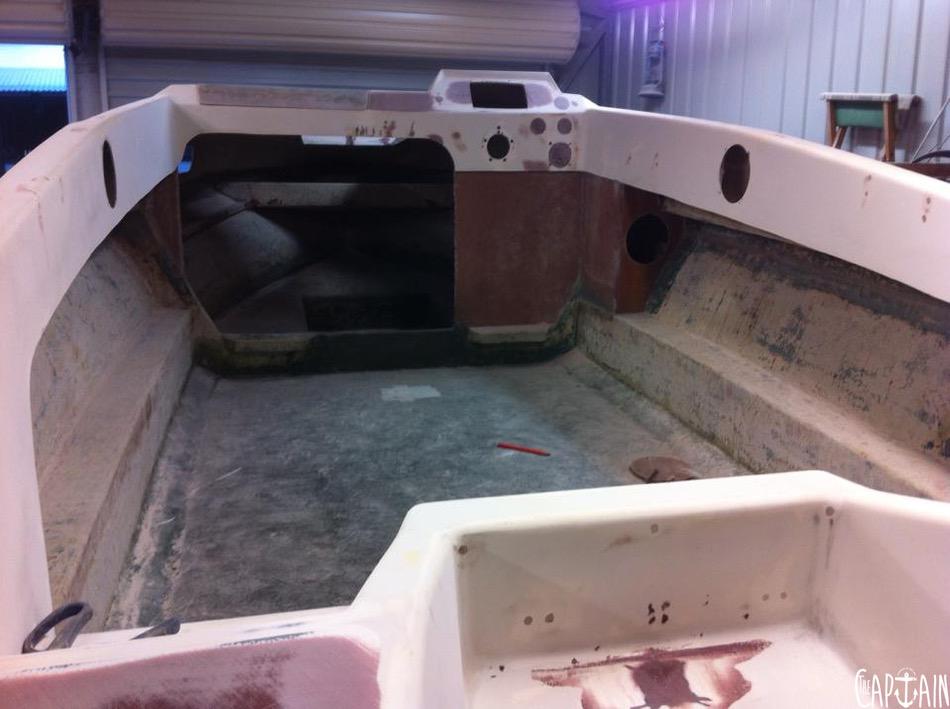


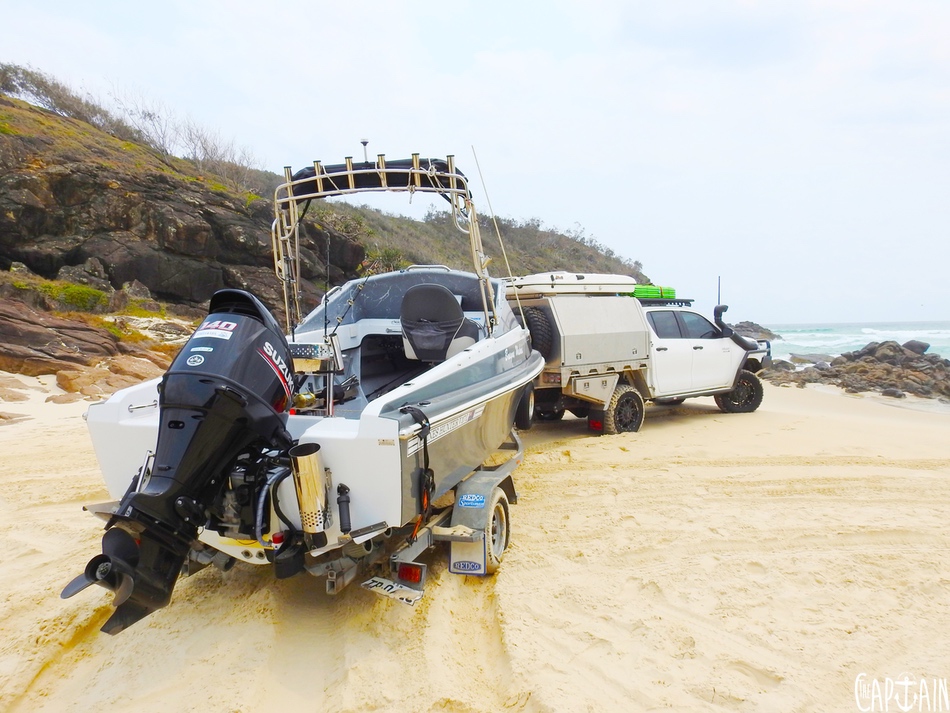







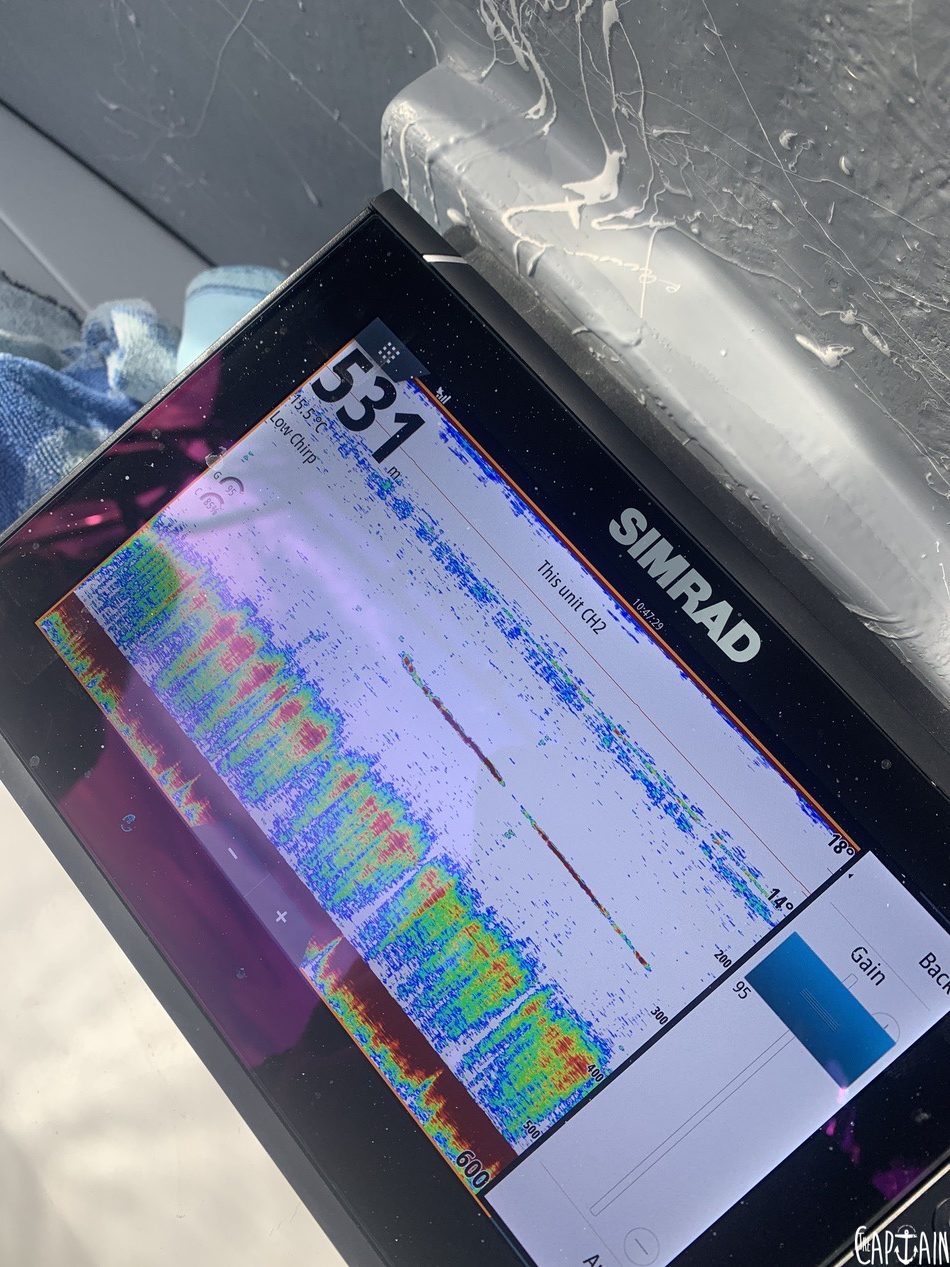
















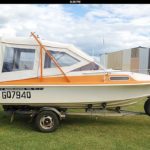
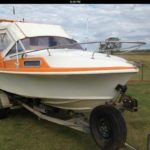

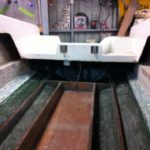








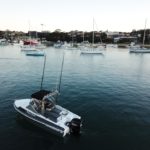




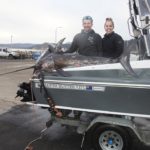
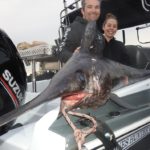



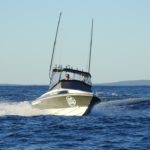

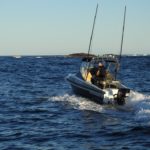




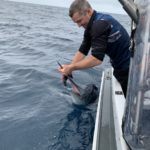














Recent Comments